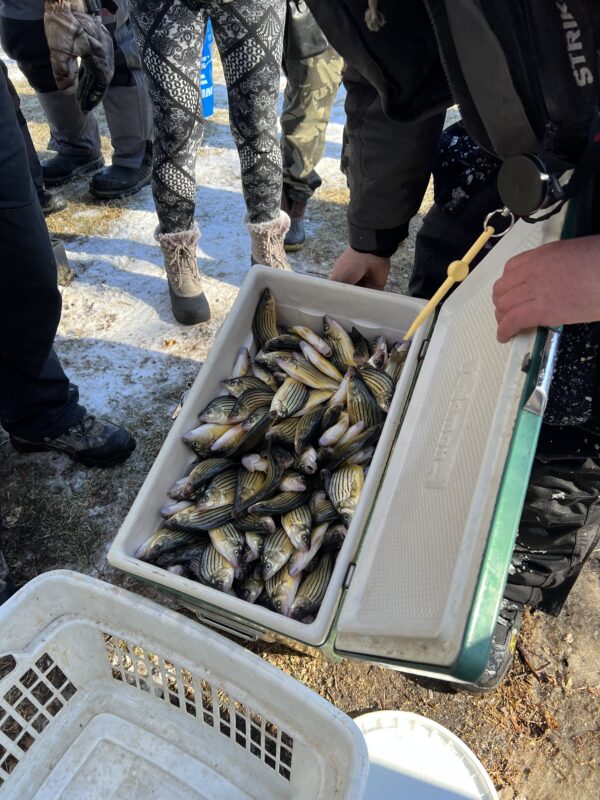Yellow Bass
are they considered an Invasive Species in MN?
A New Species in Fairmont Lakes
A new species of fish has somehow found its way into the Fairmont Chain of Lakes. Many anglers have been catching this fish species for years now. The first fish was caught by an angler in February of 2013 on Hall Lake and identified by the Department of Natural Resources as a Yellow Bass.
The yellow bass is laterally compressed similar to a sunfish or crappie. They are fast growing, reaching an average of 4-inches in the first year, 7-inches the second, 9-inches the third and 10-inches at the end of the fourth year. Both sexes mature at age 3 and few adults live beyond 4 or 5 years. The back of the fish is usually a dark olive green, with the abdomen and side being a silvery yellow.
They were first confirmed in Hall Lake in 2013 and since have spread to Budd, Sisseton and George Lakes. At the time of this article, no yellow bass have been sampled in Amber Lake. A low dam separates Hall and Amber Lakes, this structure has prevented any natural movement of the species into the Amber Lake system. That has probably changed, due to the construction of a new rock dam into Amber. In 2016 Yellow Bass were confirmed in Clear Lake by Jackson MN. Young of the year have been sampled, indicating they are reproducing naturally. In 2018, a new detection was reported on Okamanpeedan Lake by an angler. The angler sent a photo to the IA DNR and it was verified as a yellow bass. After verification, time was spent by the IA DNR electrofishing, but was unable to sample any yellow bass. Time will tell if they are present there.
The abundance of yellow bass in the Fairmont Chain of Lakes is increasing, and all age classes have been sampled which indicates they are reproducing naturally. The question remains, will they continue to increase?
It is not known what Impacts on the native fish community, or how successful Yellow Bass themselves are going to be. Currently they are documenting some baseline population characteristics that would provide future comparisons. Currently samples have been collected to determine the diets of yellow bass to discover if there is a niche overlap with native fish. More sampling is needed to determine how much competition there is for the same food source.
How did they end up in the Fairmont Chain of Lakes? The presence of dams prevents natural upstream movement and there is no connection to Iowa lakes that have yellow bass populations. This indicates they were illegally introduced into the chain of lakes. MN law states it is illegal to release live bait or fish into a waterbody or to transfer and release aquatic plants and animals from one waterbody to another.
So going back to my question. Is the Yellow Bass an invasive species in MN? No, currently it is not considered an invasive species. However, the yellow bass is listed as a species of special concern in MN. This species can over populate themselves in a short time, which will stunt their growth. Depending on diets these fish could cause ecological damage and outcompete native fish for food sources.
The yellow bass has been considered a desirable table fare. Currently, there is no season or limit on yellow bass. I encourage anglers to take advantage of this opportunity and do their part in controlling the population by taking them home for a tasty meal.


